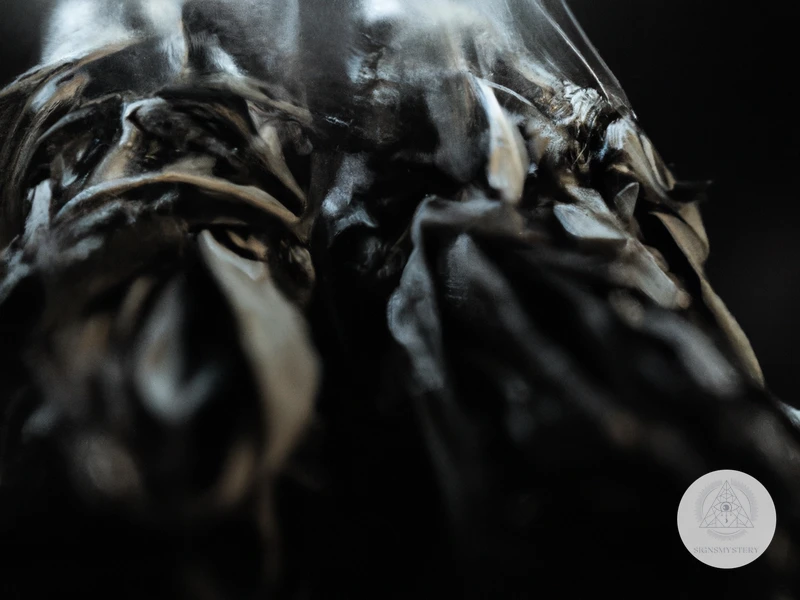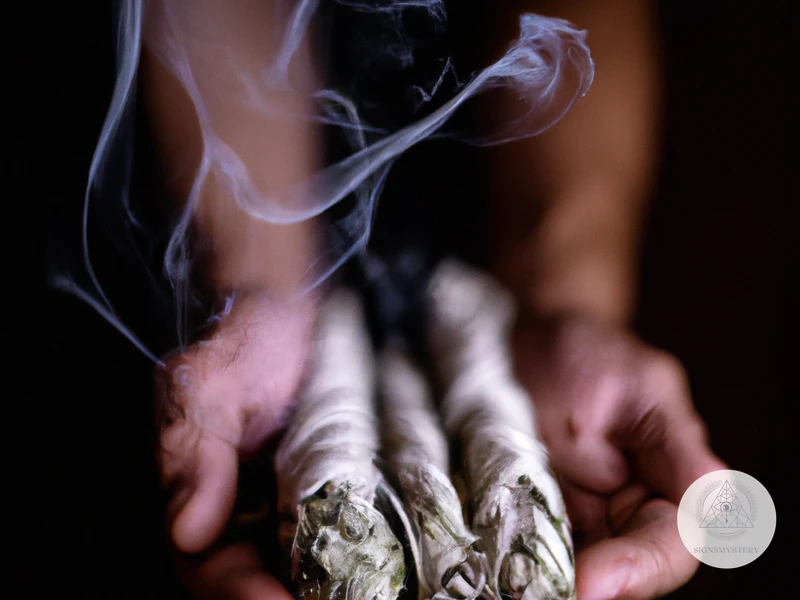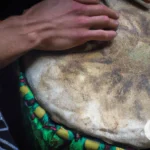Across various cultures and regions of the world, smudging has been a significant practice in spirituality and holistic healing. Smudging is a traditional ceremony that involves the burning of sacred herbs to cleanse the body, mind, and surroundings, and it has been a part of shamanic traditions for centuries. The use of smudging has evolved over time, but the fundamental purpose remains the same – to purify the environment of negative energies and to invite positive energies. In this article, we will take a closer look at the history and significance of smudging in shamanic cultures, explore the materials used for smudging, and delve into contemporary practices and alternatives.
What is Smudging?

Smudging is a practice that has been used in different cultures for centuries. It involves the burning of herbs and plants to cleanse and clear negative energies in a space or individual. This practice is highly regarded in shamanic cultures where it is believed to have a significant impact on one’s spiritual, physical, and emotional well-being. The use of smudging has been linked to various benefits, such as promoting relaxation, improving focus and clarity, and even purifying the air. It is usually done using a smudge stick, which is a bundle of dried herbs, such as sage or cedar, that is lit and allowed to smolder. Other tools such as feathers are used to fan the smoke towards the body or space being cleansed. While smudging is rooted in traditional practices, its relevance in modern times cannot be overstated.
Origins & Significance
The origins of smudging can be traced back to many ancient shamanic cultures around the world. In Native American traditions, smudging is a purification practice that involves burning sage and other sacred herbs to clear any negative energy that may be present. Similarly, African shamanic practices incorporate smudging with the use of different types of plants, depending on the tribe and the specific intention behind the smudging.
In South America, smudging is often performed with Palo Santo wood, which is known for its cleansing properties and is believed to help connect with the spirit world. In Asian shamanic cultures, incense is often used for smudging as a means of purifying the environment and making it conducive for meditation. Oceanic smudging practices are varied and may involve the use of seawater, salt, and different types of leaves to cleanse and purify the soul.
The significance of smudging varies between cultures, but it often involves spiritual purification, cleansing, and protection. Smudging can also be used to set intentions, offer prayers, and call forth positive energy. In shamanic cultures, smudging is believed to connect an individual with the sacred and invoke the power of the elements.
The use of smudging has become popularized in contemporary society, with many individuals turning to this practice for spiritual and emotional healing. The act of smudging can help to create a sacred space and provide a sense of grounding. While the specific tools and materials used for smudging may vary, the intention behind the practice remains the same.
Incorporating smudging into daily practice can be a beneficial addition to a shamanic journey. While some may prefer traditional methods, there are alternative herbs and plants that can be used for smudging. It is important to consider the ethics of using different tools and to approach the practice with intention and respect.
The origins and significance of smudging in shamanic cultures highlight the importance of spiritual purification and protection. Through the use of specific herbs, plants, and materials, individuals can connect with the sacred and invoke positive energy. Smudging can be a powerful tool for emotional and spiritual healing, and can be incorporated into daily shamanic practice to enhance personal growth.
Materials Used for Smudging
In smudging traditions, various materials have been used over the centuries for this practice. However, the most common materials for smudging are white sage, sweetgrass, cedar, and palo santo. These materials are harvested, dried, bundled, and burned to create smoke. Each of these materials is believed to have specific properties that make them ideal for smudging rituals. White sage is known for its cleansing and purifying properties and is mainly used for clearing negative energy. Sweetgrass is used for inviting positive energy and harmony into spaces. Cedar is commonly used to ward off negative influences and is believed to strengthen one’s connection with spirit. Palo santo, which is native to South America, is known for its healing and cleansing properties and is commonly used for spiritual purification.
Apart from these traditional materials, there are other alternatives that can be used for smudging rituals, such as bay leaves, lavender, rosemary, and thyme, among others. These materials have different purposes, and they are often chosen based on the intention of the smudging ritual. People often choose materials based on their personal preferences, and the materials are usually selected based on their unique properties or the purpose of the smudging ritual.
In addition to the materials used for smudging, there are also specific tools that are required for the practice. These tools include a smudge bowl, a feather or fan for spreading smoke, and a lighter to ignite the materials. Choosing the right smudge tool is essential for the success of the smudging ritual. The bowl used for holding the materials should be fire-resistant, and the feather or fan should be soft and gentle for spreading smoke. The lighter should be reliable to ensure that the materials burn evenly.
The materials used for smudging are essential for the success of the ritual. Choosing the right materials and tools based on the intention of the smudging ritual can contribute to the effectiveness of the practice. However, it is important to note that not everyone may resonate with the traditional materials and methods used for smudging. It is therefore important to be open to alternatives and find what works best for each individual. Alternative smudging herbs and plants can be used based on personal preferences and specific needs.
Smudging Across Different Shamanic Cultures & Regions
Smudging is a significant part of shamanic cultures across the world, and each region has its unique methods and materials used for smudging. Native American smudging is perhaps the most well-known, using sage and other herbs to cleanse and purify. In African cultures, smudging with incense and herbs is used for protection and to communicate with ancestors. South American shamanic cultures use Palo Santo wood and other herbs for smudging, while Asian cultures use incense and herbs for spiritual cleansing and healing. Oceanic cultures use a variety of materials, including plants and shells, while European traditions use herbs such as lavender and rosemary for smudging. Despite cultural differences, smudging remains a practice for spiritual purification and connection. To learn more about the benefits and drawbacks of smudging in shamanic healing or incorporating smudging rituals into daily practice, check out the links /benefits-drawbacks-smudging-shamanic-healing/ and /incorporating-smudging-rituals-daily-shamanic-practice/.
Native American Smudging
is undoubtedly the most well-known smudging tradition. It is an ancient ceremony that involves burning sacred herbs or resins to purify and cleanse the body, mind, and spirit. The purpose of Native American smudging varies from tribe to tribe; some use it for healing, while others use it for spiritual purification.
In this tradition, the smudging process usually involves burning sage, sweetgrass, and cedar. Sage is often used to drive out negative energies and to bring in positive energies. Sweetgrass is used to attract positive energies, while cedar is used to cleanse and purify the environment.
The smudging ceremony usually involves all participants standing in a circle around the smudging bowl. The shaman ignites the herbs or resins, and then begins to fan the smoke with a feather or fan to spread the smoke throughout the circle. Participants then waft the smoke over their bodies using their hands or a feather.
Native American smudging is a sacred tradition that is steeped in symbolism and ritual. For example, the circle represents the sacred hoop of life, while the feather is believed to connect the realm of the living with the realm of the spirits. The smoke is said to carry prayers to the heavens.
Despite the widespread popularity of Native American smudging, it is important to note that this practice is a sacred tradition and should be treated with respect. The use of smudging herbs and resins should be done with intention and prayer and only by those who have been trained in the tradition. To learn more about the ethics of using smudging tools in shamanic practice, check out this article.
Smudging can also be combined with other practices, such as cleansing crystals for shamanic healing. To learn more about this practice, check out this article. However, it’s important to remember that smudging is a powerful practice that should only be done with intention and respect for the traditions and cultures from which they originate.
African Smudging
One of the oldest and diverse cultures in the world, Africa has a rich history of smudging traditions. Smudging ceremonies are common among many tribes across Africa, and they hold significant cultural and spiritual meanings. It’s not uncommon to see incense, resins, and oleoresins used for smudging in Africa. Some of the most popular herbs used for smudging include Mugwort, Sage, and Frankincense.
In many African Shamanic practices, smudging is performed to cleanse the body and soul, to prepare for healing, to communicate with ancestors or to connect with one’s spiritual power. It’s believed that through smudging, an individual’s spiritual energy can be aligned with the higher power. For instance, the Zulu people of South Africa burn Imphepho to safeguard themselves from negative energy, remove ancestral blocks, as well as to communicate with ancestors.
African smudging is a sacred practice that is typically integrated into the rituals and ceremonies of various cultures. The use of smudging in African tradition is considered a way to reconnect with our roots and ancestors. It helps us to create a space of spiritual harmony, honor the divine, and gain inner clarity.
Despite colonization and westernization, African smudging traditions are still passed down by indigenous cultures, who work hard to preserve their heritage. These practices remind us of the importance of honoring our ancestors, both those who came before us and those who still live among us.
African smudging traditions represent a fundamental aspect of African culture, which has been preserved through generations. It’s a practice that has been used for thousands of years to cleanse, purify, and connect. It’s through smudging that we can connect with the earth and our ancestors. It creates a powerful and sacred space that allows us to tap into our spiritual energy and align ourselves with the divine.
South American Smudging
The practice of smudging in South American indigenous cultures dates back to prehistoric times and is still widely used in modern times as a way to purify and dispel negative energy.
One of the most commonly used plants in South American smudging is Palo Santo, or “holy wood”. The smoke from burning Palo Santo is believed to have both medicinal and spiritual healing properties. The wood is often harvested sustainably and used in various forms, such as incense or essential oil.
Another plant commonly used in South American smudging is Sage. Known locally as “mirra”, sage is used to clear negative energy and promote physical and emotional healing. The plant is also believed to have antibacterial properties and is used in traditional medicine.
In addition to Palo Santo and Sage, other plants used in South American smudging include Copal, which is believed to aid in communication with spirits and ancestors; Mapacho, a form of South American tobacco that is believed to have cleansing properties; and Ayahuasca, a powerful hallucinogenic brew used in shamanic rituals for spiritual healing and insight.
It is important to note that in South American smudging practices, intention and prayer play a significant role. Shamanic practitioners often incorporate specific prayers and intentions into their smudging rituals in order to positively impact the environment and create a sense of sacred space. It is believed that the smoke from the burning plants carries these intentions and prayers to the spiritual realm.
South American smudging traditions offer a diverse and unique perspective on the practice of smudging. Whether burning Palo Santo, Sage, or other traditional plants, the intention, prayer, and respect for the natural world play a crucial role in the success of these rituals.
For those interested in exploring South American smudging traditions further, it is recommended to research and find a reputable shamanic practitioner who can guide you in choosing the right smudge tools and incorporating intention and prayer into the practice. More information on this topic can be found in our article on choosing the right smudge tool for shamanic practice or our article on intention and prayer in smudging and shamanism.
Asian Smudging
Asian Smudging has a rich history that dates back centuries and is an essential part of many cultural and spiritual practices in the region. In Japan, smudging, known as koh-do, is a highly ritualistic practice that involves burning incense made from natural materials such as agarwood, sandalwood, and cinnamon. The tradition of koh-do is still prevalent in Japanese culture and is often used in Shinto and Buddhist ceremonies and temples.
In China, smudging is also a significant part of traditional spiritual practices and is known as mo-xibustion. This involves burning small cones or sticks made from dried mugwort leaves, which are held near the skin or placed directly on the skin to promote healing and relaxation. Mo-xibustion has been used for centuries in Traditional Chinese Medicine for a variety of health purposes, including pain relief and the treatment of menstrual problems.
In India, smudging is known as dhuni and has been used for centuries in Hindu and Sikh traditions. The practice involves burning sacred herbs, such as frankincense, myrrh, and sage, in a large clay vessel. The smoke is believed to purify the air and the spirit and is often used in religious ceremonies, especially during important festivals and events.
In Southeast Asia, smudging is known as smudging with fragrant woods. In this practice, woods such as sandalwood, agarwood, and frankincense are burned to
Subscribe to Our Newsletter
Sign up to receive the latest news and updates.
The tradition of smudging in Asia has been passed down through generations and has become an integral part of many spiritual practices in the region. While the methods and materials may differ between countries and cultures, the underlying belief in the power of smudging to cleanse and purify the mind and environment is a common thread throughout.
Oceanic Smudging
Oceanic Smudging practices are observed in different islands and countries like Hawaii, New Zealand, and Australia. In Maori culture, smudging is called “whakatau koha” which means “exchange of breath”. They burn different native plants like manuka, kawakawa, or harakeke in a pan to create smoke and pass it over a person to cleanse them spiritually. They may also burn herbs such as māmāki, kūmarahou, and kawakawa to treat minor ailments, offering protection, or to invoke a state of calm. In Australia, smudging ceremonies are called “smoke ceremonies” and are a part of Aboriginal culture. They burn various plants like eucalyptus and tea tree to ward off evil spirits or negative energies.
In Hawaii, traditional practices like Ho’oponopono involve smudging with smoke from different plants like palo santo wood, sweetgrass, and sagebrush. They also burn kukui nuts to bring the light and fight off negativity. Hawaiian shamans also use ti leaves not only for smudging but also for healing, protection, and to lead spirits back to the afterlife.
In Oceanic culture, smudging is not only for spiritual cleansing but also for physical health and healing. They believe that the smoke from burning plants carries healing properties that can help treat various ailments. Smudging also plays a significant role in different rituals and ceremonies, serving as a way to connect with the spiritual realm.
Table:
| Country | Plants Used |
|———|————|
| New Zealand | Manuka, kawakawa, harakeke, māmāki, kūmarahou |
| Australia | Eucalyptus, tea tree |
| Hawaii | Palo santo wood, sweetgrass, sagebrush, kukui nuts, ti leaves |
European Smudging
European Smudging practices have a long and varied history, often tied to religious and spiritual traditions. One common form of smudging in Europe is the use of incense, which has been used by several cultures for thousands of years. In Catholicism, for example, incense is often burned during Mass to purify the air and symbolize the prayers of the faithful rising to heaven.
Another form of smudging in Europe is the use of white sage, which is native to the Mediterranean region. The ancient Greeks and Romans believed that the smoke from burning sage could purify the air and drive away evil spirits. Likewise, smudging with cedar was common in ancient Celtic traditions, and was believed to have similar purifying and protective properties.
In addition to these more traditional forms of smudging, European cultures have adapted to include newer forms of smudging such as palo santo which is often used in modern spiritual practices and herbal bundles made with various herbs such as rosemary, thyme, and lavender.
Despite the rich and varied history of smudging in Europe, the practice has faced opposition and persecution, particularly during the witch hunts of the medieval era. Nevertheless, European smudging practices have persisted and continue to evolve today, as people seek new ways to incorporate the ritual into their spiritual and daily lives.
Contemporary Practices
In contemporary times, smudging has gained popularity beyond shamanic cultures and has become a mainstream practice for spiritual and wellness purposes. Many people turn to smudging to clear their living spaces of negative energy and promote positivity. The practice has also been used for aromatherapy and to enhance mindfulness during meditation. Essential oils and herbs such as sage, palo santo, and lavender are commonly used in contemporary smudging practices. Smudging is also seen as a way to connect with one’s spiritual self and to promote self-care. Numerous health benefits have been attributed to smudging, including stress relief, boosting energy levels, and promoting sound sleep. With the continued growth of interest in holistic wellness and spirituality, it’s no wonder that smudging has become a go-to practice for many people seeking peace and harmony in their daily lives.
Relevance in Modern Times
In modern times, smudging has gained popularity outside of shamanic cultures due to its perceived healing properties. The practice of smudging has been embraced by some alternative medicine practitioners and spiritualists as a holistic method for promoting relaxation and minimizing stress. Additionally, many people smudge their homes or workplaces to ward off negative energy and promote the flow of positive energy.
In recent years, smudging has also been adopted by some mainstream wellness brands who market smudge sprays, incense, and other smudging materials to promote relaxation, meditation, and mindfulness. These brands often emphasize the use of natural, sustainable materials to appeal to environmentally conscious consumers.
However, as with any culturally significant practice, there is debate about the ethics of non-indigenous people adopting smudging without proper understanding and respect for its origins. Some Indigenous activists argue that the commercialization and appropriation of smudging by non-Indigenous people is disrespectful and exploitative.
Despite this controversy, the relevance of smudging in modern times cannot be denied. The practice has become a popular tool for promoting relaxation and mindfulness, and its popularity continues to grow as more people embrace the benefits of natural, holistic healing practices. Whether practiced in a traditional shamanic culture or adopted by modern wellness enthusiasts, smudging remains a powerful tool for promoting balance, healing, and positive energy.
How to Smudge
To smudge, you’ll first need to gather the necessary materials, including a smudge stick, a heatproof container, and a lighter or matches. The smudge stick can be made of dried sage, cedar, sweetgrass, or other herbs depending on your preference. Once you have your materials, follow these steps to smudge:
1. Open a window or door to allow any negative energy to escape.
2. Light the smudge stick and allow it to burn for a few seconds before blowing out the flame. You want the smudge to produce smoke, not flames.
3. Hold the smudge stick at a 45-degree angle with the tip down towards the heatproof container to catch any ash.
4. Walk around the space you are smudging, starting at the doorway and moving clockwise. Use your hand or a feather to waft the smoke into corners and throughout the room.
5. Pay close attention to areas where negative energy may accumulate, like corners, closets, and where electronics are located.
6. When you have finished smudging, extinguish the smudge stick by gently pressing it into the heatproof container. Dispose of any ash and debris appropriately.
Remember, smudging should always be done with respect and intention. Take a few deep breaths and focus on your intention before beginning. You can also set a specific intention, such as cleansing negative energy or inviting positivity into your space.
Alternatives to Traditional Methods
In modern times, there are many alternative methods for smudging that do not involve traditional materials or practices. One alternative method is using herbal incense made from natural ingredients such as lavender, sage, or sandalwood. These natural incense sticks can be lit like traditional smudge sticks, to release their aromatic and cleansing properties.
Another alternative is using essential oils in a diffuser or spray bottle. Essential oils such as sweet orange, eucalyptus, or frankincense have been traditionally used for healing and cleansing purposes, and can be easily used in a modern smudging practice.
Sound can also be an alternative to traditional smudging methods. Many people use crystal singing bowls or other instruments to create sound vibrations that cleanse and purify the energy in a space. Some may also use their own voice to create a similar effect.
Another alternative is using selenite wands or charged crystals to cleanse and purify energy. Selenite wands are said to have cleansing properties and can be used to draw negative energy away from a space. Crystals such as amethyst or clear quartz can be charged with intention and used in a similar way.
Regardless of the method chosen, it is important for individuals to find a technique that resonates with them personally. Creating a modern smudging practice may involve trying different techniques and materials until the right fit is found. The key is to always approach the practice with intention and respect for its origins and significance in shamanic cultures.
Conclusion
In conclusion, the practice of smudging has a rich history steeped in tradition and spiritual significance. From Native American cultures to African, Asian, Oceanic, and European cultures, smudging has been used for centuries as a way to cleanse spaces, people, and objects and to connect with the spiritual realm.
Despite its ancient roots, smudging remains relevant in modern times as a powerful tool for promoting well-being and balance. Many people use smudging today as a way to combat stress, anxiety, and negative energies. With the rise of alternative medicine and practices, smudging has only grown in popularity and is now widely accepted as a legitimate practice for spiritual and emotional healing.
Whether using traditional smudging materials or modern alternatives, the act of smudging is a personal and spiritual experience that can offer a profound sense of comfort and peace. By combining intention, ritual, and scent, smudging can help us tap into higher states of consciousness and connect with our innermost selves.
As we continue to learn and explore the benefits of smudging, it’s clear that this sacred practice is here to stay. As long as people seek to connect with the divine and promote healing and balance, smudging will remain an integral part of our spiritual journey.
Frequently Asked Questions
How does smudging work?
Smudging is believed to work by clearing negative energy and spirits, restoring balance, and creating a sacred space.
Can anyone smudge?
Yes, anyone can smudge. However, it is important to learn the traditional methods and show respect for the process.
What herbs are used for smudging?
Sage, cedar, sweetgrass, lavender, and palo santo are commonly used for smudging.
What is palo santo?
Palo santo is a sacred wood used in South American smudging traditions. It is believed to have healing and cleansing properties.
Is smudging cultural appropriation?
It can be seen as cultural appropriation if the traditional methods and cultural significance are not respected. It is important to educate oneself and show reverence to the indigenous cultures that developed smudging traditions.
Can smudging help with anxiety or depression?
While there is no scientific evidence to support this claim, some people find that smudging can have a calming effect on the mind and promote relaxation.
Can smudging have any negative effects?
Some people may have respiratory issues or allergies to the smoke produced by smudging. It is important to use it in a well-ventilated area and with caution.
What is a smudge bowl?
A smudge bowl is a tool used to hold the herbs during smudging. It is typically made of a natural material, such as abalone shell or clay.
How do I know if I should smudge?
If you feel like your space could benefit from a spiritual cleanse or if you have experienced negative energy, smudging may be worth trying.
What do I do with the herbs after smudging?
The herbs can be left to burn out on their own or be extinguished in a safe manner. Some people bury the remaining herbs in the earth as a way of returning them to nature.










